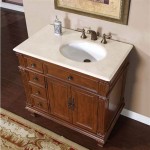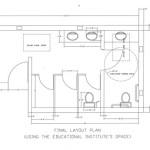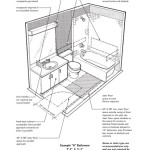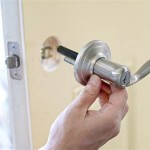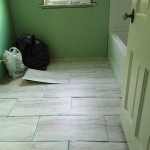Public Bathroom Sink Water Pipe Leaking From Bottom of Tank: Diagnosis and Repair
Leaking water pipes are a common problem in public restrooms, often manifesting as a persistent drip from the bottom of the sink tank. This issue can stem from various causes, ranging from simple wear and tear to more complex plumbing problems. Promptly identifying and resolving the leak is crucial to prevent water damage, conserve water resources, and maintain a hygienic environment for restroom users. This article will delve into the common causes of leaks from the bottom of a public bathroom sink tank, and explain the steps involved in diagnosis and repair.
Identifying the Source of the Leak
The first step in addressing a public bathroom sink water pipe leak is to accurately pinpoint the source of the leak. This can be done through careful observation and visual inspection. The most likely sources of a leak from the bottom of the tank include:
- Overflow Tube Connection: This is a common culprit, especially if the overflow tube has become loose or cracked.
- Tank Inlet Valve Connection: The inlet valve, responsible for filling the tank, may have a loose or damaged connection, causing water to leak out.
- Tank Ball or Flapper: A worn-out or improperly seated tank ball or flapper can allow water to leak from the tank, especially if the water level is high.
- Tank to Bowl Connection: A crack or loose connection between the tank and the bowl can result in leakage from the bottom of the tank.
- Cracked Tank: In some cases, the tank itself may be cracked, resulting in a leak from the bottom.
Visually inspecting the tank for signs of leaks, cracks, or loose connections is crucial for identifying the root cause. Closely observing the water flow, the sound of dripping, and the location of the leak can further aid in pinpointing the problem area.
Repairing the Leaky Water Pipe
Repairing a leaking water pipe from the bottom of a public bathroom sink tank is generally a straightforward process that can be accomplished by a skilled plumber or an experienced DIY enthusiast. The repair process will vary depending on the identified cause of the leak. Below are some common repair scenarios:
Overflow Tube Connection Leak
If the leak is from the overflow tube connection, tightening or replacing the connection is typically the solution. To tighten the connection, use a wrench to ensure the nut is securely fastened. If the connection is cracked or damaged, replacing the overflow tube is necessary.
Tank Inlet Valve Connection Leak
A leaking tank inlet valve connection can be repaired by tightening the connection, replacing the valve, or replacing the inlet valve gasket. To tighten the connection, use a wrench to securely fasten the nut connecting the valve to the tank. If the connection is damaged, replacing the valve or gasket is necessary.
Tank Ball or Flapper Leak
A leaky tank ball or flapper requires replacement with a new, compatible part. To access the tank ball or flapper, remove the tank lid and flush the toilet. Replace the worn-out part with a new one, ensuring it fits snugly and seals properly.
Tank to Bowl Connection Leak
A leak from the tank to bowl connection typically necessitates replacing the connection hardware, including the tank bolts and nuts, or the entire tank-to-bowl connection assembly. Replacing these parts requires disassembling the connection and replacing them with new, compatible components.
Cracked Tank
A cracked tank usually necessitates replacing the entire tank. This may require using a compatible replacement tank specifically designed for the existing sink fixture.
Preventing Future Leaks
While addressing the current leak is a priority, preventing future leaks is essential for long-term water conservation and maintenance. Here are some preventive measures to consider:
- Regular Inspections: Routine inspections of the tank, connections, and fittings can identify potential problems early on, allowing for timely repairs before they escalate into significant leaks.
- Proper Water Pressure: High water pressure can put undue stress on the plumbing system and contribute to leaks. Reducing water pressure through a pressure regulation valve can help mitigate this risk.
- Water Softeners: Hard water can cause mineral buildup and corrosion, leading to leaks. Using a water softener can help mitigate these issues.
- Quality Materials: Employing high-quality, durable materials for the tank, fittings, and connections can enhance the longevity of the system and minimize the likelihood of leaks.
- Professional Maintenance: Regularly scheduling professional plumbing maintenance can help identify and resolve potential issues before they become major problems.
By following these preventive measures, property owners and facility managers can significantly reduce the risk of future leaks and maintain a well-functioning, water-efficient public bathroom sink system.

Common Sink Leaks You Could Probably Fix Yourself

Bathroom Leak Top 5 Causes Waterleak Co
Find And Repair Plumbing Leaks Diy Family Handyman

Why Is Water Leaking Out Of Your Toilet

Fixing A Toilet Leak

How To Tighten Water Supply Line Connectors Diy Family Handyman

How To Fix A Leaking Toilet 2024 Guide Forbes Home

Fixing Common Leaks Around The Home

What To Do When Your Toilet Is Leaking At The Base All Time Nir Plumbing

Places Where Leaks Love To Hide Blue Sky Plumbing
Related Posts

